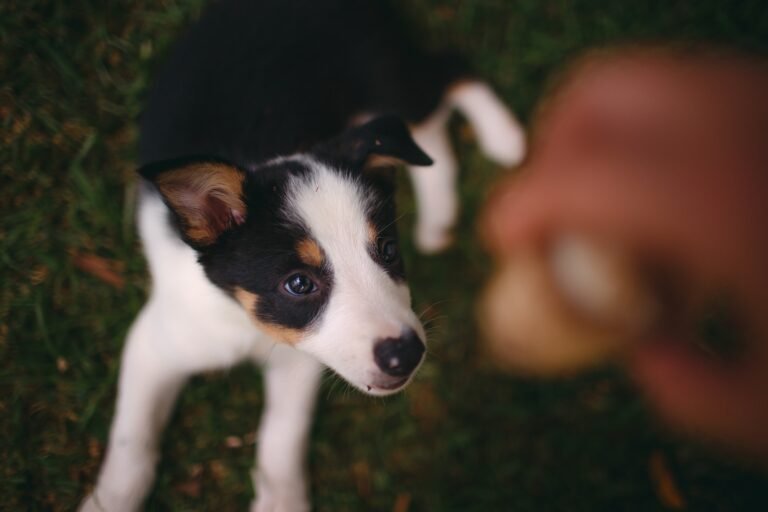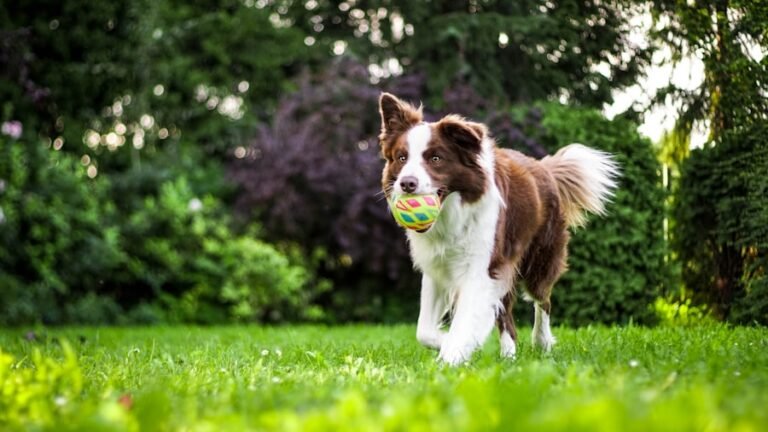From Indoor to Outdoor: How to Transition Your Border Collie Puppy to Sleeping Outside
Transitioning your border collie to outdoor sleeping can be a big step for both you and your puppy. It is important to approach this transition with care and consideration to ensure that your puppy feels comfortable and safe in their new sleeping environment. In this article, we will discuss the importance of a smooth transition, how to assess your border collie’s readiness for outdoor sleeping, tips for creating a comfortable sleeping area, gradually introducing your puppy to outdoor sleeping, encouraging positive associations with the outdoors, providing protection from the elements, establishing a consistent sleeping routine, monitoring your puppy’s behavior and comfort level, addressing any behavioral issues that may arise, providing adequate exercise and stimulation, and celebrating your puppy’s successful transition.
Understanding the Importance of a Smooth Transition
A smooth transition is important for your puppy’s well-being as it helps them feel secure and comfortable in their new sleeping environment. Abrupt changes can cause stress and anxiety in dogs, which can lead to behavioral issues and health problems. By gradually transitioning your border collie to outdoor sleeping, you are giving them time to adjust and become familiar with their new surroundings.
Transitioning your puppy to outdoor sleeping can also be challenging for you as an owner. It may be difficult to let go of having your puppy sleep indoors with you, especially if they have been doing so since they were brought home. However, it is important to remember that dogs are naturally den animals and enjoy having their own space. By allowing your border collie to sleep outdoors, you are providing them with an opportunity to fulfill their natural instincts.
Assessing Your Border Collie’s Readiness for Outdoor Sleeping
Before transitioning your border collie to outdoor sleeping, it is important to assess their readiness. Factors such as age, breed, and temperament should be taken into consideration. Puppies under six months of age may not be ready for outdoor sleeping as they may still need frequent bathroom breaks during the night. Additionally, some breeds are more adaptable to outdoor sleeping than others. Border collies, being a working breed, are generally well-suited for outdoor living.
Temperament is another important factor to consider. If your border collie is anxious or fearful, they may not be ready for outdoor sleeping. It is important to work on building their confidence and trust before making the transition. Gradually exposing them to the outdoors and providing positive experiences can help them feel more comfortable.
Creating a Comfortable Outdoor Sleeping Area
Creating a comfortable sleeping area for your border collie is essential for their well-being. Choose a location that is sheltered from the elements and provides adequate protection from rain, wind, and extreme temperatures. A doghouse or a covered porch can be ideal options. Make sure the area is clean and free from any hazards that could harm your puppy.
When it comes to materials, provide your border collie with a comfortable bed or blanket to sleep on. Avoid using materials that can retain moisture or become too hot in the summer months. Opt for bedding that is easy to clean and maintain.
Gradually Introducing Your Puppy to Outdoor Sleeping
To ensure a smooth transition, it is important to gradually introduce your puppy to outdoor sleeping. Start by allowing them to spend short periods of time outside during the day. Supervise them closely and provide positive reinforcement for good behavior. Gradually increase the amount of time they spend outside until they are comfortable spending the entire night outdoors.
During this process, it is important to monitor your puppy’s behavior and comfort level. If they show signs of distress or discomfort, such as excessive barking or pacing, it may be necessary to slow down the transition process and provide additional support.
Encouraging Positive Associations with the Outdoors
To help your border collie develop positive associations with the outdoors, make outdoor time fun and enjoyable for them. Take them for walks, play games, and provide plenty of opportunities for socialization with other dogs and people. This will help them see the outdoors as a positive and rewarding place to be.
You can also provide your puppy with interactive toys and puzzles to keep them mentally stimulated while they are outside. This will help prevent boredom and destructive behavior.
Ensuring Adequate Protection from the Elements
Protecting your border collie from the elements is crucial for their well-being. Make sure they have access to shade during hot summer months and provide them with a warm and dry shelter during colder months. Insulate their sleeping area to keep them comfortable and provide them with fresh water at all times.
It is also important to regularly check your puppy for signs of overheating or hypothermia. If they are panting excessively, drooling, or shivering, it may be necessary to bring them indoors or provide additional protection.
Establishing a Consistent Sleeping Routine
Establishing a consistent sleeping routine is important for your border collie’s overall well-being. Dogs thrive on routine and having a set bedtime can help them feel secure and relaxed. Choose a time that works for both you and your puppy and stick to it every night.
Before bedtime, make sure your border collie has had plenty of exercise and mental stimulation. This will help tire them out and ensure they are ready for a good night’s sleep.
Monitoring Your Puppy’s Behavior and Comfort Level
Monitoring your puppy’s behavior and comfort level is essential during the transition to outdoor sleeping. Keep an eye out for any signs of distress or discomfort, such as excessive barking, whining, or pacing. If you notice any changes in behavior, it may be necessary to reassess the transition process and make adjustments as needed.
Additionally, pay attention to your puppy’s physical comfort. Make sure they have access to fresh water at all times and check their sleeping area regularly for any signs of discomfort or hazards.
Addressing Any Behavioral Issues
During the transition to outdoor sleeping, it is common for behavioral issues to arise. Your border collie may become anxious or exhibit destructive behavior as they adjust to their new sleeping environment. It is important to address these issues in a positive and effective way.
Provide your puppy with plenty of mental and physical stimulation to help alleviate boredom and anxiety. Use positive reinforcement techniques to reward good behavior and redirect any unwanted behavior. If the issues persist, consider seeking the help of a professional dog trainer or behaviorist.
Providing Adequate Exercise and Stimulation
Providing your border collie with adequate exercise and stimulation is crucial for their overall well-being. Border collies are a highly active breed that requires plenty of physical and mental stimulation to thrive. Make sure your puppy gets daily exercise through walks, playtime, and training sessions.
In addition to physical exercise, provide your border collie with mental stimulation through puzzle toys, obedience training, and interactive games. This will help keep their mind sharp and prevent boredom.
Celebrating Your Puppy’s Successful Transition to Outdoor Sleeping
Transitioning your border collie to outdoor sleeping is a significant milestone that should be celebrated. Once your puppy has successfully adjusted to their new sleeping environment, reward them with praise, treats, or a special toy. This will reinforce positive behavior and help them associate outdoor sleeping with positive experiences.
Remember to continue providing your border collie with love, attention, and care even after the transition is complete. Regularly check in on their well-being and make adjustments as needed to ensure they are happy and comfortable.
Transitioning your border collie to outdoor sleeping can be a rewarding experience for both you and your puppy. By approaching the transition with care and consideration, you can ensure that your puppy feels safe and comfortable in their new sleeping environment. Assess your puppy’s readiness, create a comfortable sleeping area, gradually introduce them to outdoor sleeping, encourage positive associations with the outdoors, provide protection from the elements, establish a consistent sleeping routine, monitor their behavior and comfort level, address any behavioral issues, provide adequate exercise and stimulation, and celebrate their successful transition. By following these tips, you can help your border collie thrive in their new sleeping environment.








